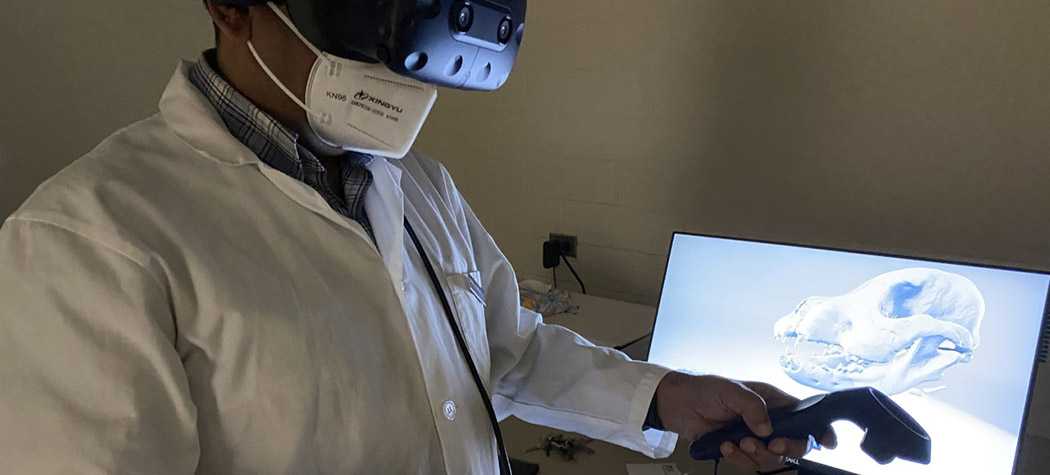
Innovative Teaching At OVC Brings Virtual Reality To Teaching Anatomy
March 23, 2022
 Student veterinarians at the University of Guelph’s Ontario Veterinary College will begin using a virtual reality (VR) simulation tool this semester to help learn about dog and cow anatomy.
Student veterinarians at the University of Guelph’s Ontario Veterinary College will begin using a virtual reality (VR) simulation tool this semester to help learn about dog and cow anatomy.
The technology – believed to be the first use of VR for teaching anatomy at a Canadian veterinary college – allows students to move around virtually inside an animal’s body for a close-up look at organs and tissues.
Besides helping to teach anatomy alongside the college’s veterinary anatomy labs, VR tools give Doctor of Veterinary Medicine (DVM) students a glimpse of the future of veterinary medicine, said Dr. Pavneesh Madan, a professor in OVC’s Department of Biomedical Sciences.
“As a university, we are in the profession of training the next generation,” said Madan, who is OVC’s course coordinator for veterinary anatomy. “I think virtual reality becomes a very powerful tool from a futuristic point of view.”
Developed in 2018 at the Virginia-Maryland College of Veterinary Medicine, the pertinent software is available to schools under open licence. That means OVC paid only for two VR headsets and associated hardware, now housed in a dedicated room near OVC’s existing anatomy lab.
Madan is using the device this semester to develop protocols for first-year anatomy classes. Students will be able to book time to use the tools to complement their lab training.

Donning a headset, students can “move around” inside the virtual animals to examine and label parts. They can use handheld controls to manipulate the VR model to examine material from any direction, magnify or reduce body parts, and zero in on organs and tissues in three dimensions. Clicking a button allows users to strip away overlying bone to focus on internal organs and systems. The software also includes quizzes for students to complete.
Madan said this experiential and immersive learning technology will also help prepare students for future veterinary practice. The VR technology may ultimately be used for planning and simulating surgical operations.
Further in the future, he said, augmented VR may one day enable a practitioner to “visit” patients or attend procedures as a hologram model without leaving the clinic.
Read the entire news story on the University of Guelph website.
.png)